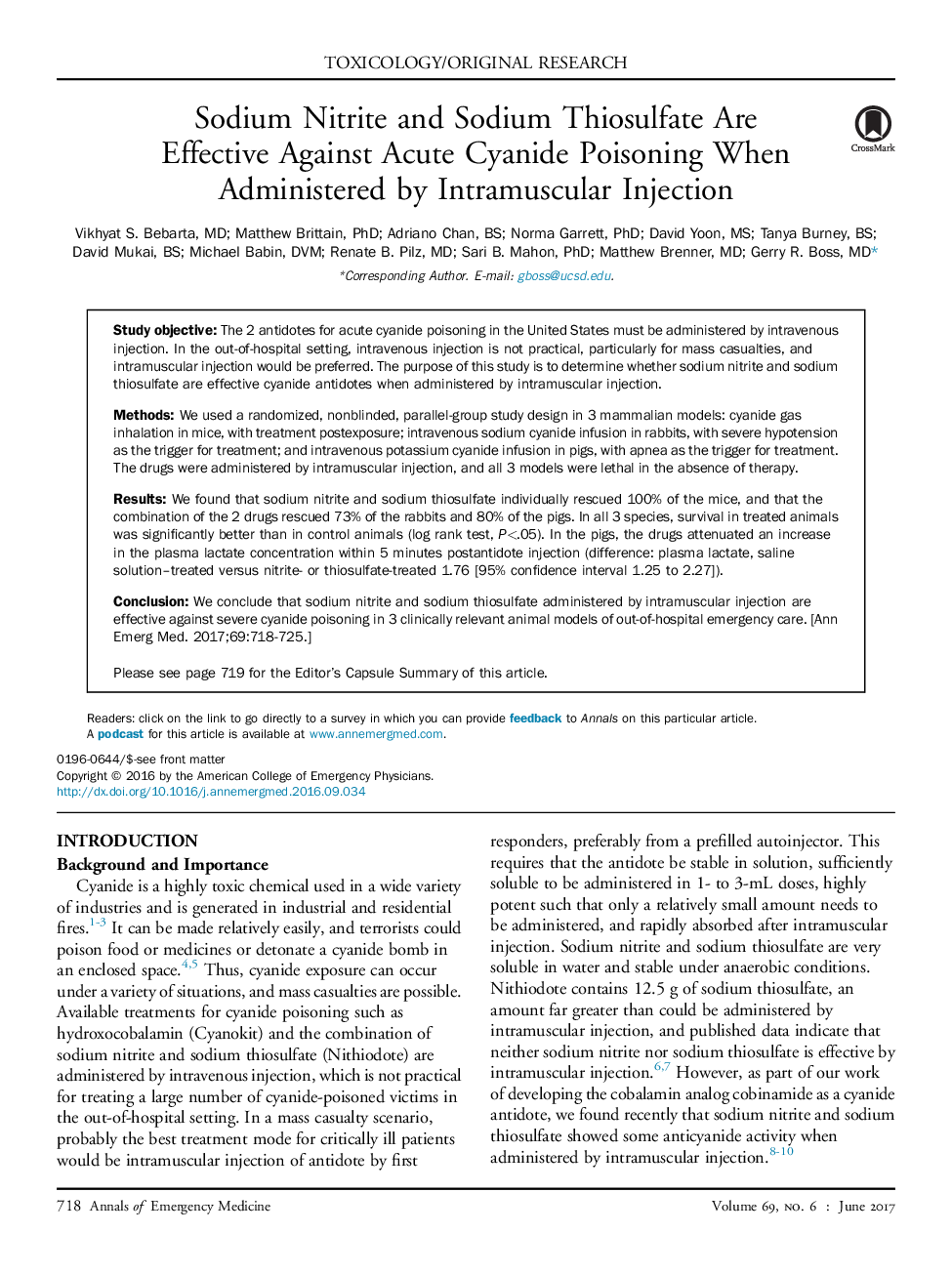| Article ID | Journal | Published Year | Pages | File Type |
|---|---|---|---|---|
| 5651578 | Annals of Emergency Medicine | 2017 | 12 Pages |
Study objectiveThe 2 antidotes for acute cyanide poisoning in the United States must be administered by intravenous injection. In the out-of-hospital setting, intravenous injection is not practical, particularly for mass casualties, and intramuscular injection would be preferred. The purpose of this study is to determine whether sodium nitrite and sodium thiosulfate are effective cyanide antidotes when administered by intramuscular injection.MethodsWe used a randomized, nonblinded, parallel-group study design in 3 mammalian models: cyanide gas inhalation in mice, with treatment postexposure; intravenous sodium cyanide infusion in rabbits, with severe hypotension as the trigger for treatment; and intravenous potassium cyanide infusion in pigs, with apnea as the trigger for treatment. The drugs were administered by intramuscular injection, and all 3 models were lethal in the absence of therapy.ResultsWe found that sodium nitrite and sodium thiosulfate individually rescued 100% of the mice, and that the combination of the 2 drugs rescued 73% of the rabbits and 80% of the pigs. In all 3 species, survival in treated animals was significantly better than in control animals (log rank test, P<.05). In the pigs, the drugs attenuated an increase in the plasma lactate concentration within 5 minutes postantidote injection (difference: plasma lactate, saline solution-treated versus nitrite- or thiosulfate-treated 1.76 [95% confidence interval 1.25 to 2.27]).ConclusionWe conclude that sodium nitrite and sodium thiosulfate administered by intramuscular injection are effective against severe cyanide poisoning in 3 clinically relevant animal models of out-of-hospital emergency care.
